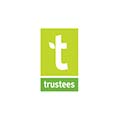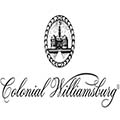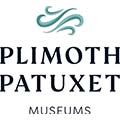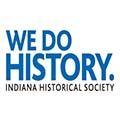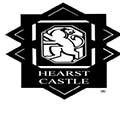Index
Applications & Benefits of GAO’s RFID, BLE, IoT & Drones for Historical Sites Industry
GAO Helps Customers Comply with Standards, Mandates & Regulations of Historical Site Industry
GAO’s Software Provides Easy Integration with API
Case Studies of RFID Applications
GAO RFID Systems & Hardware for Historical Site Industry
Overview
Historical sites are physical locations that hold significant cultural, social, or historical value due to their connections to past events, people, or periods. These sites provide tangible links to the past and offer insights into the history, traditions, and development of societies. Historical sites can take various forms, including buildings, structures, ruins, landscapes, monuments, and archaeological sites. They often serve as educational resources, tourist attractions, and sources of inspiration, contributing to a deeper understanding of our shared human heritage. The preservation and careful management of historical sites are essential to ensure that their cultural and historical significance endures for future generations.
GAO’s RFID, BLE, IoT, and drone technologies have helped its customers in Historical Sites Industry to improve their work processes, their operations and productivity by better management of their staff, materials and operational equipment such as in Historical Sites Industry Audiovisual Equipment, Visitor Services Equipment, Safety and Security Equipment, Conservation and Restoration Equipment, Interpretive and Educational Equipment, Museum and Exhibition Equipment, Tourism and Hospitality Equipment, Communication and Connectivity Equipment, Landscaping and Grounds Equipment, Accessibility Equipment, Archaeological and Excavation Equipment, Laboratory Equipment, Transportation Equipment, Cleaning and Maintenance Equipment.
Ranked as a top 10 global RFID supplier and based in New York City and Toronto, GAO RFID Inc offers a wide choice of RFID (radio frequency identification) readers and tags at ultra high frequency (UHF), high frequency (HF, including NFC) and low frequency (LF), BLE (Low Energy Bluetooth) gateways and beacons, and various RFID and BLE systems such as people tracking, asset tracking, access control, parking control, fleet management, WIP (work in progress), traceability. Such RFID and BLE products and systems, together with its IoT and drone technologies, have been widely used in sub-industry. Its sister company, GAO Tek Inc. https://gaotek.com, is a leading supplier of industrial or commercial testers and analyzers, drones, and network products.
The targeted markets of both GAO RFID Inc. and GAO Tek Inc. are North America, particularly the U.S., Canada, Mexico, and Europe. As a result, this website gaorfid.com is offered in English and other major languages of North America and Europe such as Spanish, French, German, Italian, Polish, Ukrainian, Romanian, Russian, Dutch, Turkish, Greek, Hungarian, Swedish, Czech, Portuguese, Serbian, Bulgarian, Croatian, Danish, Finnish, Norwegian, Slovak, Catalan, Lithuanian, Bosnian, Galician, Slovene, Latvian, Estonian, Welsh, Icelandic, and Irish.
Applications & Benefits of GAO’s RFID, BLE, IoT & Drones for Historical Sites Industry
To satisfy its customers, GAO’s RFID or RFID Systems for Historical Sites Industry are offered in 2 versions. One version is that its software is running on a local server that normally is on our client’s premise, and another version runs in the cloud. The cloud server could be GAO’s cloud server, client’s own cloud server or a cloud server from one of the leading cloud server providers such as Amazon Web Services (AWS), Microsoft Azure, Google Cloud, IBM Cloud (formerly SoftLayer), Oracle Cloud, RedHat, Heroku, Digital Ocean, CloudFlare, Linode and Rackspace. The above illustrates GAO system for sub-industry with its software running on a local server.
The above illustrates GAO system for Historical Sites Industry with its software running in cloud.
GAO’s RFID and BLE technologies, consisting of RFID readers, RFID tags, BLE gateways, BLE beacons, software, cloud services and their systems, have the following applications in Historical Sites industry:
- Visitor Access and Admission Control: RFID-enabled tickets or wristbands can streamline entry processes, reducing waiting times and enhancing security.
- Guided Tours: RFID tags in exhibits and points of interest can trigger audio guides or multimedia presentations on visitors’ devices, offering personalized and interactive tours.
- Interactive Exhibits: RFID-enabled interactive displays can provide detailed information when visitors interact with objects, encouraging engagement and learning.
- Augmented Reality (AR) Enhancements: Combining RFID with AR technology, visitors can access historical reconstructions, animations, and additional content related to artifacts.
- Artifact Tracking and Management: RFID tags can be attached to artifacts, enabling efficient inventory management, tracking, and preventing theft or loss.
- Conservation Monitoring: RFID-enabled sensors can help monitor temperature, humidity, and light levels to ensure optimal preservation conditions for delicate artifacts.
- Queue Management: RFID-based systems can manage visitor flows, reducing overcrowding and ensuring a smoother experience during peak times.
- Interactive Workshops and Activities: RFID tags can enable hands-on workshops and activities, providing visitors with interactive learning experiences.
- Personalized Experiences: RFID technology can facilitate personalized content delivery, tailoring information to visitors’ interests and preferences.
- Cultural Exchange and Language Translation: RFID-enabled devices can offer translations of exhibit information, enhancing accessibility for international visitors
- Digital Souvenirs: Visitors can use RFID-equipped devices to collect digital souvenirs, photos, or information during their visit.
- Event and Program Management: RFID can assist in managing events, workshops, and performances by tracking attendance and managing access to different areas.
- Feedback and Engagement: RFID systems can gather feedback from visitors, allowing historical sites to continually improve their offerings.
- Emergency Response: RFID-enabled systems can aid emergency response teams in identifying and locating visitors during evacuations.
- Educational Initiatives: RFID technology can support educational programs by tracking student participation and engagement in various activities.
- Membership and Loyalty Programs: RFID cards or devices can be used for membership identification and loyalty programs, offering special benefits to frequent visitors.
- Cafeteria and Gift Shop Transactions: RFID-based payment systems can streamline transactions in on-site amenities, improving convenience for visitors.
- Archaeological Excavation Management: RFID tags can be used to label and catalog artifacts during archaeological digs, improving the accuracy of data collection.
GAO’s drone technologies find the following applications in the Historical Sites industry:
- Smart Lighting: IoT-enabled lighting systems can adjust brightness and color temperature based on occupancy and time of day, enhancing the ambiance while conserving energy.
- Environmental Monitoring: IoT sensors can track temperature, humidity, air quality, and light levels to ensure optimal preservation conditions for artifacts and structures.
- Security and Surveillance: IoT cameras and sensors can provide real-time monitoring of historical sites, helping prevent vandalism, theft, or unauthorized access.
- Predictive Maintenance: IoT devices can monitor the structural integrity of buildings and monuments, predicting maintenance needs and preventing deterioration.
- Visitor Tracking and Analytics: IoT systems can analyze visitor movements to optimize exhibit layouts, understand traffic patterns, and improve the overall visitor experience.
- Energy Management: IoT-based systems can regulate heating, cooling, and other energy-consuming systems to minimize waste and reduce operating costs.
- Smart Signage: IoT-enabled signs can dynamically update information, direct visitors, and even provide translations based on user preferences.
- Audio Guides and Interpretive Content: IoT devices can provide location-based audio guides and multimedia content to enhance visitor engagement and education.
- Virtual Reality (VR) and Augmented Reality (AR) Enhancements: IoT can integrate with VR/AR applications, offering immersive experiences and historical reconstructions.
- Emergency Response Systems: IoT can aid in emergency response by providing real-time data on occupancy, guiding evacuations, and improving coordination.
- Asset Tracking: IoT-enabled tags can track the movement of artifacts, ensuring their location is known at all times and preventing loss or theft.
- Tourist Flow Management: IoT systems can monitor and manage visitor flows to prevent overcrowding and enhance the overall visitor experience.
- Cultural Heritage Preservation: IoT sensors can monitor the condition of artifacts, sculptures, and structures, alerting authorities to any changes that might require attention.
- Waste Management: IoT-enabled bins can monitor fill levels and optimize waste collection routes, reducing operational costs and environmental impact.
- Public Engagement: IoT can facilitate interactive displays, encourage user-generated content, and gather feedback to improve site offerings.
- Automated Audiovisual Presentations: IoT can trigger audiovisual presentations, lighting effects, or animations based on visitor proximity or scheduled events.
- Historical Data Collection: IoT devices can gather data about visitor interactions, preferences, and demographics, aiding in historical and sociocultural research.
- Remote Monitoring: IoT systems enable remote monitoring and management of historical sites, allowing staff to respond to issues quickly.
- Exhibit Conservation: IoT sensors can monitor factors like light exposure and temperature, alerting curators if conditions exceed safe thresholds.
- Interconnected Amenities: IoT can enable efficient management of amenities such as restrooms, cafes, and gift shops, improving convenience for visitors.
GAO’s Assists Clients with Standards, Mandates & Regulations of Historical Sites industry
GAO RFID Inc. has developed its products and systems in compliance with industry standards and mandates. GAO has assisted our customers in Historical Sites industry to deploy RFID, BLE, IoT and drone systems and to ensure such deployments complying with applicable industry standards, U.S. government regulations and Canadian government regulations such as:
RFID, BLE, IoT, & Drone Standards & Mandates
- ISO 14443
- ISO 15693
- ISO 18000-3
- ISO 18000-6C (EPC Gen2)
- ISO 21451
- ISO 29167
- CEN EN 15961
- GS1 EPC UHF Gen2
- NFC Forum
- ICAO Doc 9303
- Bluetooth 4.0
- Bluetooth 4.1
- Bluetooth 4.2
- Bluetooth 5.0
- Bluetooth 5.1
- Bluetooth 5.2
- IEEE 802.15.4
- Zigbee
- LoRaWAN
- MQTT (Message Queuing Telemetry Transport)
- CoAP (Constrained Application Protocol)
- OPC UA (Open Platform Communications Unified Architecture)
- Thread
- Bluetooth Mesh
- IPv6 over Low Power Wireless Personal Area Networks (6LoWPAN)
- oneM2M
- ASTM F38 (Committee on Unmanned Aircraft Systems)
- ISO 21384 (Unmanned aircraft systems — Part 1: Requirements for aerial work operations with aircraft having a maximum take-off mass of less than 150 kg)
- ISO 23665 (Unmanned aircraft systems — Part 2: Unmanned aircraft systems intended for aerial work and not requiring certification of the remote pilot or operator, or a privilege for low-risk operators)
- ISO 23666 (Unmanned aircraft systems — Part 3: Unmanned aircraft intended for aerial work with pilot on board or remotely piloted)
- FAA Part 107 (Small Unmanned Aircraft Systems)
- GDPR (General Data Protection Regulation)
- HIPAA (Health Insurance Portability and Accountability Act)
- ADA (Americans with Disabilities Act)
- ICAO (International Civil Aviation Organization) standards for e-passports
- Local Data Protection Laws and Regulations
- Aviation Authority Regulations
- Restricted Areas
- Privacy Laws
- Cultural Heritage Protection
- Noise Regulations
- Local Authority Permits
- Environmental Impact
- Air Traffic Control Coordination
- Safety Considerations
- Historical Site Management
US Government Regulations
- National Historic Preservation Act (NHPA)
- Archaeological Resources Protection Act (ARPA)
- Antiquities Act
- National Environmental Policy Act (NEPA)
- Section 106 Review Process
- Section 110 of NHPA
- National Park Service Organic Act
- National Register of Historic Places
- National Monuments Designation
- Historic Tax Credit Program
Canadian Government Regulations
- Historic Sites and Monuments Act
- Heritage Railway Stations Protection Act
- National Historic Sites of Canada Order
- Canada National Parks Act
- Canadian Environmental Assessment Act
- Canadian Register of Historic Places
- Historic Places Initiative
- Indigenous Heritage Conservation
- Parks Canada Agency Act
- Canadian Historic Places Day Act
GAO Software Provides Easy Integration with API
GAO’s RFID and BLE software offers a free trial for both the server-based and cloud versions, and offers an API to the important systems in Historical Sites industry such as:
Personnel Management:
- Staff Scheduling and Shift Management
- Training and Skill Development Tracking
- Employee Attendance and Timekeeping
Equipment Management:
- Maintenance Scheduling for Historical Structures
- Inventory Management for Tools and Maintenance Equipment
- Tracking and Maintenance of Audiovisual Equipment
Access Control:
- Visitor Access Control to Restricted Areas
- Employee Access Control to Sensitive Sections
- Monitoring and Auditing Access Events
Warehouse Management:
- Storage and Tracking of Artifacts and Exhibits
- Inventory Management for Souvenirs and Merchandise
- Efficient Retrieval and Storage of Historical Documents
Supply Chain Management:
- Procurement of Restoration and Maintenance Supplies
- Tracking and Reordering of Museum Supplies
- Managing Suppliers for Gift Shop Merchandise
Other Applications
- Audiovisual Guides and Interactive Exhibits
- Visitor Engagement and Feedback Collection
- Augmented Reality (AR) for Historical Interpretation
- Ticketing and Reservation Systems
- Guided Tour Scheduling and Booking
- Tourist Flow Monitoring for Crowd Management
- Temperature and Humidity Monitoring for Preservation
- Light Exposure Control to Prevent Artifact Damage
- Air Quality Monitoring for Visitor Comfort
- Surveillance Systems to Protect Artifacts and Structures
- Emergency Response Planning and Coordination
- Monitoring Fire and Intrusion Detection Systems
- Data Collection for Historical Research
- Visitor Demographics and Preferences Analysis
- Analytics for Decision-Making and Improvements
- Providing Braille Signage and Tactile Maps
- Guided Tours for Visually Impaired Visitors
- Audio Description for Exhibits
GAO has enabled its customers to make use of some of the leading software and cloud services in Historical Sites industry. Below are some of popular software and cloud services in Historical Sites industry.
Workday, BambooHR, ADP Workforce Now, Paycom, Ultimate Software (UKG),Asset Panda, EZOfficeInventory, UpKeep, Fiix, eMaint, Avigilon, Genetec, Brivo, LenelS2,Oracle Warehouse Management, Manhattan Associates, SAP Extended Warehouse Management, JDA Warehouse Management, Infor WMS,SAP Supply Chain Management, Oracle Supply Chain Management, JDA Supply Chain Planning, Kinaxis Rapid Response, Infor Supply Chain Management,PastPerfect, Gallery Systems TMS, Lucidea Argus, Rediscovery Software Proficio , Altru, Blackbaud eTapestry, Heritage Asset Management System (HAMS), ArtifaxEvent, MuseumAnywhere, Piction,AWS (Amazon Web Services), Microsoft Azure, Google Cloud Platform, IBM Cloud, Oracle Cloud, Salesforce, Dropbox Business, Box, Adobe Creative Cloud, Shopify (for online museum stores and ticketing)
GAO has worked with some of the leading technology companies in Historical Sites industry in to provide integrated its RFID, BLE, IoT and drone solutions to customers. Here are some of the technology leaders in Historical Sites industry:
Blackbaud, MuseumAnywhere, Lucidea, Gallery Systems, Re:discovery Software, Genetec, Avigilon, Oracle, Microsoft, IBM, Salesforce, Amazon Web Services (AWS), Google Cloud Platform, Adobe, Shopify
Sony, Samsung Electronics, Panasonic, LG Electronics, Bose Corporation, Sennheiser, Epson, Crestron, Shure Incorporated, JBL by Harman, Denon, Extron Electronics, AMX by Harman, Audio-Technica, Crown Audio, Biamp Systems, Poly (formerly Polycom), ClearOne, TOA Corporation
Siemens, Honeywell, Johnson Controls, Schneider Electric, ABB, Bosch Building Technologies, Tyco, Trane Technologies, Carrier Global Corporation, Lutron Electronics, Control4, Savant Systems, Legrand, Leviton, Philips Hue (Signify), Insteon, Fibaro, ELAN Home Systems
Case Studies of RFID, IoT & Drone Applications
Case Studies of RFID Applications
Below are some RFID application cases in Historical Sites industry
- Artifact Tracking and Management: RFID can be used to track and manage artifacts within historical sites and museums. Each artifact could be tagged with an RFID tag, allowing for efficient inventory management and tracking of the artifact’s movement and location.
- Visitor Engagement: RFID technology can enhance visitor experiences by providing interactive and personalized content. Visitors could be given RFID-enabled devices or cards that interact with RFID tags placed at various points within the historical site, offering information, audio guides, or multimedia presentations.
- Access Control: RFID can be used to control access to restricted areas within historical sites, ensuring that only authorized personnel or visitors are granted entry.
- Conservation and Temperature Monitoring: RFID sensors can be used to monitor environmental conditions, such as temperature and humidity, to ensure that artifacts are preserved properly.
- Preventing Theft and Unauthorized Removal: RFID tags can be attached to valuable artifacts to prevent theft or unauthorized removal. If an artifact is moved without authorization, the system can trigger an alert.
- Archival Record Keeping: RFID technology can assist in maintaining accurate and organized archival records of historical artifacts, documents, and collections.
- Guided Tours and Wayfinding: RFID-enabled guides can provide visitors with guided tours and wayfinding assistance, helping them navigate through the historical site and learn about its significance.
- Maintenance and Preservation: RFID can be used to schedule and track maintenance tasks required to preserve historical structures and artifacts.
- Colonial Williamsburg, Virginia: UHF RFID used for interactive historical reenactments and personalized visitor experiences.
- Alcatraz Island, California: UHF RFID enhancing visitor engagement through multimedia guides and exhibits.
- Mount Vernon, Virginia: UHF RFID providing insights into George Washington’s estate and life.
- Gettysburg National Military Park, Pennsylvania: UHF RFID delivering interactive tours and battlefield information.
- National World War II Museum, New Orleans: UHF RFID enhancing exhibits with multimedia content and personalized narratives.
- Independence National Historical Park, Philadelphia: UHF RFID used to offer detailed information about Revolutionary War history.
- USS Constitution Museum, Boston: UHF RFID enabling immersive experiences and historical insights.
- Ellis Island National Museum of Immigration, New York: UHF RFID providing personalized stories of immigrants’ experiences.
- Many applications of RFID by GAO can be found here
- Research, Technology & Professional Services Industries | RFID Solutions – GAO RFID
Case Studies of IoT Applications
Below are some IoT application cases in Historical Sites industry:
- Certainly, here are some hypothetical descriptions of IoT applications in historical sites in the USA based on common trends up until September 2021:
- IoT sensors at Alcatraz Island, California, monitor visitor movements and foot traffic, optimize tour routes and provide real-time insights to manage crowds.
- Independence National Historical Park, Philadelphia, utilizes IoT devices to maintain precise climate control inside historical buildings, safeguarding artifacts and maintaining their preservation.
- Mount Vernon, Virginia, employs IoT-connected smart lighting systems that adjust based on natural light levels and occupancy, reducing energy consumption while enhancing visitor experiences.
- Colonial Williamsburg, Virginia, provides visitors with IoT-enabled audio guides that offer historical context and stories triggered by their locations within the site.
- IoT-powered multimedia exhibits at Gettysburg National Military Park, Pennsylvania, use proximity sensors to deliver immersive content and reenactments, enhancing engagement.
- The National World War II Museum, New Orleans, employs IoT-based occupancy tracking to ensure safe distancing, using real-time data to manage visitor flow during exhibitions.
- USS Constitution Museum, Boston, integrates IoT sensors into replicas, allowing visitors to interact with historical objects, triggering audio explanations and contextual information.
- Ellis Island National Museum of Immigration, New York, uses IoT-equipped wristbands to guide visitors through immersive experiences that share personal immigrant stories.
- Historic District of Savannah, Georgia, features IoT-enabled information kiosks providing visitors with real-time walking tour guidance and historical facts.
- Monticello, Virginia, employs IoT sensors in its gardens to monitor soil moisture and weather conditions, supporting historically accurate agricultural practices.
- Certainly, here are some hypothetical descriptions of IoT applications in historical sites in Canada based on common trends up until September 2021:
- At Fort Calgary, Alberta, IoT sensors monitor visitor traffic and guide tourists through historical reenactments, optimizing the experience based on real-time data.
- The Canadian Museum for Human Rights in Winnipeg employs IoT-enabled interactive exhibits that adapt content to visitor preferences and provide personalized narratives.
- Old Montreal’s historic district integrates IoT-connected beacons to provide tourists with location-based historical information through their smartphones.
- Fort York National Historic Site in Toronto utilizes IoT sensors to monitor environmental conditions, ensuring artifacts are preserved in appropriate climate levels.
- Gros Morne National Park in Newfoundland deploys IoT weather stations to provide real-time updates on trail conditions, helping visitors plan safe hikes.
- The Canadian War Museum in Ottawa uses IoT technology to create immersive exhibits that respond to visitor interactions, delivering engaging multimedia content.
- IoT-powered smart lighting systems at St. Louisbourg National Historic Site in Nova Scotia enhance the night tours by adapting illumination levels to visitor presence.
- Historic sites in Quebec’s Vieux-Québec use IoT sensors to collect foot traffic data, aiding in crowd management during peak tourist seasons.
- Fort Henry National Historic Site in Kingston implements IoT sensors to monitor structural integrity, ensuring the safety of both visitors and historical structures.
- Mackinac Island, a historical site in Canada, integrates IoT sensors into horse-drawn carriages to monitor animal well-being and enhance the visitor experience.
- Teotihuacan Archaeological Site: IoT sensors manage visitor flow, preventing overcrowding and enhancing safety at the ancient pyramids.
- Chichen Itza: IoT-enabled virtual reality headsets provide immersive historical reconstructions for an engaging educational experience.
- Palenque Archaeological Site: IoT devices monitor humidity levels, ensuring artifacts are preserved in optimal conditions within the museum.
- Coba Ruins: IoT-connected audio guides deliver location-specific historical narratives and insights as visitors explore the site.
- Tulum Archaeological Site: IoT sensors track visitor movements, aiding in maintaining the site’s fragile ecosystem and reducing environmental impact.
Case Studies of Drone Applications
Below are some drone application cases in Historical Sites industry:
- Drones used at Chaco Culture National Historical Park, New Mexico, for aerial mapping and documentation of ancient Puebloan ruins.
- Mount Rushmore National Memorial, South Dakota, employed drones for capturing detailed imagery and videos of the iconic monument.
- Drones equipped with thermal cameras surveyed Mesa Verde National Park, Colorado, revealing hidden archaeological features.
- Monticello, Virginia, utilized drones to assess structural conditions and aid in the maintenance of Thomas Jefferson’s estate.
- Historic Williamsburg, Virginia, employed drones to create captivating promotional content showcasing the historical village.
- Gettysburg National Military Park, Pennsylvania, used drones to conduct surveys of the battlefield, offering unique historical insights.
- Drones captured aerial footage of Ellis Island, New York, contributing to virtual tours and historical documentaries.
- Independence Hall, Philadelphia, employed drones for exterior documentation and preservation planning.
- Aerial views of Alcatraz Island, California, were captured by drones to create content for virtual experiences and historical documentaries.
- Colonial Williamsburg, Virginia, used drones to film immersive videos of historical reenactments, providing new perspectives for visitors.
- Certainly, here are hypothetical descriptions of drone applications in historical sites in Canada:
- Drones used at the Fortress of Louisbourg National Historic Site, Nova Scotia, for aerial documentation of the reconstructed fortress and archaeological sites.
- Drones equipped with LiDAR technology surveyed the Parliament Hill area in Ottawa, Ontario, revealing historical features beneath the surface.
- At the Royal Tyrrell Museum of Palaeontology, Alberta, drones captured aerial imagery of the surrounding badlands, contributing to promotional materials.
- Drones assisted in mapping the interior of the Cabot Tower in Signal Hill National Historic Site, Newfoundland and Labrador, aiding in restoration planning.
- The drone’s aerial footage enhanced the interpretation of the Battle of the Plains of Abraham at Quebec City, Quebec, providing dynamic perspectives.
- Drones captured imagery of the historic buildings and streets in Old Quebec, Quebec, contributing to virtual tours and educational content.
- At the Forks National Historic Site, Manitoba, drones documented the confluence of rivers and historic structures for preservation and educational purposes.
- Drones provided panoramic views of Hatley Castle at Royal Roads University, British Columbia, contributing to its historical interpretation and promotion.
- In Saint John, New Brunswick, drones documented the historic waterfront and architecture, offering unique insights into the city’s maritime heritage.
- Drones captured captivating aerial shots of Fort Rodd Hill and Fisgard Lighthouse National Historic Sites in British Columbia, enhancing their online presence.
- Drones surveyed the ancient ruins of Teotihuacan, capturing high-resolution aerial imagery for documentation and research.
- At Chichen Itza, drones provided detailed 3D mapping of the archaeological site, aiding in preservation and restoration efforts.
- Drones equipped with LiDAR technology mapped the Palenque Archaeological Zone, revealing hidden architectural features within the Mayan ruins.
- The historic city of Guanajuato employed drones to capture aerial images of its colonial architecture, contributing to promotional materials.
- Drones documented the sprawling layout of Monte Albán, providing valuable insights for archaeological research and public education.
- The Templo Mayor in Mexico City utilized drones for aerial surveys, assisting in understanding the layout and structure of the Aztec archaeological site.
- Drones captured panoramic views of the ancient city of Tulum, offering breathtaking perspectives of the coastal ruins and their surroundings.
- Archaeological sites in Oaxaca, such as Mitla and Yagul, used drones for aerial photography to enhance their interpretation and online presence.
- Drones surveyed the Palacio de Bellas Artes in Mexico City, aiding in restoration efforts and capturing stunning aerial imagery of the iconic building.
- The historic center of Puebla deployed drones to create immersive promotional videos, showcasing the city’s UNESCO World Heritage sites.
- Drones surveyed the Roman Colosseum, capturing high-definition aerial imagery for archaeological documentation and preservation.
- At the Acropolis of Athens, drones equipped with LiDAR technology mapped the ancient structures, revealing intricate architectural details.
- Drones captured aerial footage of Stonehenge, providing unique perspectives for research, site management, and promotional content.
- The historic city of Dubrovnik, Croatia, employed drones to monitor and manage visitor traffic on its medieval walls.
- Drones provided panoramic views of the Alhambra in Granada, Spain, enhancing the understanding of the complex’s layout and architectural beauty.
- At the Tower of London, drones surveyed the historic fortress, aiding in conservation efforts and offering insights into its structure.
- Drones captured aerial imagery of the medieval city of Bruges, Belgium, contributing to promotional materials and heritage documentation.
- The Colosseum in Rome used drones for detailed inspections of its exterior, helping identify areas in need of restoration.
- Drones surveyed the Parthenon in Athens, Greece, offering detailed imagery for architectural analysis and conservation planning.
- The historic city of Prague employed drones to create captivating videos showcasing its well-preserved architecture and cultural heritage.
GAO RFID Systems & Hardware for Historical Sites industry
GAO RFID Inc. offers the largest selection of BLE gateways, BLE beacons, RFID readers, tags, antenna, printers, and integrated RFID systems for various industries, including apparel, piece goods, and notions merchant wholesalers.
BLE (Bluetooth Low Energy)
GAO offers advanced BLE gateways:
- BLE (Bluetooth Low Energy)
As well as versatile beacons with such important functions as temperature, humility, vibration, and panic button:
- GAO RFID Beacons
GAO’s BLE technology is suitable for many industries, including apparel, piece goods, and notions merchant wholesalers.
UHF (Ultra High Frequency) RFID
GAO offers the largest selection of UHF RFID readers for various industries, including apparel, piece goods, and notions merchant wholesalers:
GAO RFID offers the widest choice of UHF RFID tags, labels, badges, wristbands for various industries, including apparel, piece goods, and notions merchant wholesalers:
And an array of antennas to address different applications:
HF (High Frequency), NFC (Near Field Communications) and LF (Low Frequency) RFID
GAO offers the largest selection of HF, NFC, and LF RFID readers for various industries, including apparel, piece goods, and notions merchant wholesalers:
- high-frequency-13-56-mhz-rfid-readers
- high-frequency-134-khz-rfid-readers
- low-frequency-125-khz-rfid-readers
HF, NFC and LF RFID tags, labels, badges, wristbands for various industries, including apparel, piece goods, and notions merchant wholesalers:
And antennas:
GAO also offers RFID printers:
Digital I/O adapters:
And relay controllers:
For embedded applications, GAO offers UHF, HF and LF RFID reader modules:
- uhf-860-960-mhz-rfid-modules
- 13-56-mhz-high-frequency-rfid-modules
- 125-khz-low-frequency-rfid-modules
The RFID systems by GAO are highly popular for clients in apparel, piece goods, and notions merchant wholesalers:
Physical asset or operational equipment tracking system:
Assets that can be effectively tracked using GAO’s technologies include.
- RFID Tagging Systems: RFID tagging systems are used to attach RFID tags to apparel, piece goods, and notions. These tags contain unique identification information that can be read by RFID readers, enabling efficient inventory management and tracking.
- Barcode Scanners: Barcode scanners are commonly used in the apparel industry to scan barcodes on products, price tags, and shipping labels. They provide accurate and fast data capture, facilitating inventory control, pricing, and order processing.
- Handheld Mobile Devices: Handheld mobile devices such as smartphones or tablets equipped with inventory management software are used by apparel wholesalers for on-the-go inventory tracking, order processing, and communication with suppliers and customers.
- Point of Sale (POS) Systems: POS systems are essential equipment for apparel wholesalers. These systems include hardware like cash registers, barcode scanners, and receipt printers, along with software that enables sales transactions, inventory management, and customer tracking.
- Shelving and Racking Systems: Shelving and racking systems are used to organize and store apparel, piece goods, and notions in warehouses and distribution centers. They provide efficient space utilization and easy access to products for picking and packing.
- Conveyor Systems: Conveyor systems are used to transport apparel items, piece goods, and notions within warehouses and distribution centers. They automate the movement of products, reducing manual handling and improving operational efficiency.
People or workers tracking system:
- PERSONNEL TRACKING SOFTWARE
Physical asset or operational equipment tracking system:
- ASSET TRACKING SOFTWARE
Personnel or people access control system:
- ACCESS CONTROL SOFTWARE
Parking or vehicle control system:
- PARKING CONTROL SOFTWARE
GAO Makes Efforts to Satisfy Customers
Large Choice of Products
In order to satisfy the diversified needs of their corporate customers, GAO RFID Inc. and its sister company GAO Tek Inc. together offer a wide choice of RFID, BLE, IoT, drones, testing and measurement devices, and network products.
Overnight Delivery
In order to shorten the delivery to our customers, GAO has maintained a large stock of its products and is able to ship overnight within continental U.S. and Canada, and fast delivery to anywhere in Mexico and Europe from the nearest warehouse.
Local to Our Customers
We are located in both the U.S. and Canada. We travel to customers’ premises if necessary. Hence, we provide a very strong local support to our customers in North America, particularly the U.S., Canada and Mexico, and Europe. Furthermore, we have built partnerships with some integrators, consulting firms and other service providers in different cities to further strengthen our services. Here are some of the service providers in Historical Sites industry we have worked with to serve our joint customers:
- Industry Associations
- Networking
- Online Research
- Accenture
- Deloitte
- Capgemini
- Cognizant
- IBM Global Business Services
- PwC (PricewaterhouseCoopers)
- EY (Ernst & Young)
- Infosys
- Wipro
- Tata Consultancy Services (TCS)
- Compugen
- Long View Systems
- Softchoice
- Sierra Systems
- Scalar
- CGI
- ProServeIT
- OnX Canada
- Inlanta Technologies
- i. Systems
- Neoris
- Softtek
- KIO Networks
- UST Global
- Grupo Carso
- Telvista
- Grupo Quimmco
- Megacable
- Origo Solutions
- Binbit
- Atos
- Sopra Steria
- Devoteam
- TietoEVRY
- NTT DATA
- DXC Technology
- Wipro
GAO Has Served Historical Sites Extensively
GAO RFID Inc. and its sister company GAO Tek Inc. together offer a wide choice of RFID, BLE, IoT, drone, testing and measurement devices, and network products.
GAO’s products and technologies have helped its customers in Historical Sites industry to achieve success in
Digital Transformation, Virtual Reality (VR) and Augmented Reality (AR), Sustainable Tourism, Data Analytics, Interpretation and Storytelling, Accessible Tourism, Smart Preservation, Community Engagement, Cultural Heritage Tourism, Personalized Experiences, Heritage Preservation, Digital Experience, Interactive Exhibits, Visitor Engagement, Historical Interpretation, Cultural Tourism, Smart Heritage, Sustainability, AR Tours, Storytelling Platforms, IoT-enabled Conservation, Virtual Guided Tours, Accessible Heritage, Community Involvement, Data-Driven Insights, Blockchain for Provenance, Green Tourism, Crowdsourced Heritage, Geo-Fencing, Remote Learning
GAO RFID Inc. has served many customers in Historical Sites industry, including its various divisions such as
- Archaeological Sites: Locations where archaeological remains provide insights into past cultures and civilizations.
- Cultural Heritage Sites: Places that hold cultural significance, including traditions, rituals, and practices.
- Heritage Buildings and Structures: Architecturally significant buildings, castles, forts, palaces, and other structures from various historical periods.
- Monuments and Memorials: Structures erected to commemorate historical events, individuals, or groups.
- Battlefields and Military Sites: Locations of significant battles or military activities, often preserved as historical landmarks.
- Ancient Ruins: Remains of ancient civilizations, such as ancient cities, temples, and pyramids.
- Historic Districts: Designated areas with a concentration of historically significant buildings and structures.
- Museums and Heritage Sites:Institutions dedicated to preserving and showcasing artifacts, art, and cultural heritage.
- Industrial Heritage Sites:Locations associated with industrial history, such as factories, mills, and mining sites.
- Natural Heritage Sites: Locations with geological, ecological, or natural significance intertwined with human history.
- World Heritage Sites: Sites recognized by UNESCO as having outstanding cultural or natural significance on a global scale.
- Religious and Spiritual Sites: Places of worship, pilgrimage, and religious significance.
- Colonial Sites: Locations related to colonization, exploration, and early settlements.
- Historic Landscapes: Natural or designed landscapes with historical importance.
- Lighthouses and Maritime Sites: Sites related to maritime history, including lighthouses, shipwrecks, and maritime structures.
- Historic Homes: Residences of historical figures, writers, politicians, and other notable individuals.
GAO’s technologies enable its customers in Historical Sites to effectively track their workforces such as Tour Guide, Curator, Archivist, Conservator, Historian, Archaeologist, Exhibit Designer, Education Coordinator, Restoration Specialist, Interpretive Specialist, Visitor Services Coordinator, Collections Manager, Facilities Manager, Event Coordinator, Digital Content Manager, Volunteer Coordinator, Marketing Coordinator, Researcher, Audiovisual Technician, Gift Shop Manager and effectively track operational assets such as Display Cases, Cameras, Computers, Projectors, Audio Systems, Lighting Equipment, Scanners, 3D Printers, Tools and Toolkits, Security Systems, Climate Control Systems, Cleaning Equipment, Handheld Radios, Mobile Devices, GPS Devices, Cash Registers, POS Systems, Walkie-Talkies, Printers, Binoculars
Here are some of the leading companies in Historical Sites industry GAO has served:
- Historic New England
- The Colonial Williamsburg Foundation
- National Park Service (Northeast Region)
- The Trustees of Reservations
- Mystic Seaport Museum
- New York Historical Society
- Plimoth Patuxet Museums
- Valley Forge National Historical Park
- Monticello
- Fort Ticonderoga
- Strawbery Banke Museum
- Fort McHenry National Monument and Historic Shrine
- The Henry Ford
- Abraham Lincoln Presidential Library and Museum
- Colonial Williamsburg Foundation (Midwest operations)
- Indiana Historical Society
- Ohio History Connection
- Chicago History Museum
- Greenfield Village
- Conner Prairie
- Missouri History Museum
- Detroit Historical Society
- Hearst Castle
- Alcatraz Island
- The Getty Center
- Yellowstone National Park
- Grand Canyon National Park
- San Francisco Maritime National Historical Park
- California State Railroad Museum
- Olympic National Park








